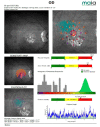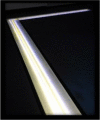Current Approaches to Low Vision (Re)Habilitation
- PMID: 31245978
- PMCID: PMC6624462
- DOI: 10.4274/tjo.galenos.2018.53325
Current Approaches to Low Vision (Re)Habilitation
Abstract
With increased life expectancy at birth and especially the rising incidence of age-related macular degeneration, low vision (re)habilitation is becoming more important today. Important factors to consider when presenting rehabilitation and treatment options to patients presenting to low vision centers include the diagnosis of the underlying disease, the patient’s age, their existing visual functions (especially distance and near visual acuity), whether visual loss is central or peripheral, whether their disease is progressive or not, the patient’s education level, and their expectations from us. Low vision patients must be guided to the right centers at the appropriate age, with appropriate indications, and with realistic expectations, and the rehabilitation process must be carried out as a multidisciplinary collaboration.
Keywords: Low vision; low vision (re)habilitation; Current approaches; LVA.
Conflict of interest statement
Figures















Similar articles
-
Vision-specific health-related quality of life in age-related maculopathy patients presenting for low vision services.Ophthalmic Epidemiol. 2004 Apr;11(2):131-46. doi: 10.1076/opep.11.2.131.28159. Ophthalmic Epidemiol. 2004. PMID: 15255028
-
Factors influencing the choice of low-vision devices for visual rehabilitation in Stargardt disease.Clin Exp Optom. 2019 Jul;102(4):426-433. doi: 10.1111/cxo.12867. Epub 2018 Dec 24. Clin Exp Optom. 2019. PMID: 30582217
-
Age related macular degeneration and visual disability.Curr Drug Targets. 2011 Feb;12(2):221-33. doi: 10.2174/138945011794182755. Curr Drug Targets. 2011. PMID: 20887239
-
Vision rehabilitation for Canadians with less than 20/40 acuity: the SmartSight model.Can J Ophthalmol. 2006 Jun;41(3):355-61. doi: 10.1139/I06-021. Can J Ophthalmol. 2006. PMID: 16767192 Review.
-
Principles of modern low vision rehabilitation.Can J Ophthalmol. 2006 Jun;41(3):289-312. doi: 10.1139/I06-027. Can J Ophthalmol. 2006. PMID: 16767184 Review.
Cited by
-
Short-Term Clinical Results of Preferred Retinal Locus Training.Turk J Ophthalmol. 2022 Feb 23;52(1):14-22. doi: 10.4274/tjo.galenos.2021.73368. Turk J Ophthalmol. 2022. PMID: 35196835 Free PMC article.
-
The intraocular implant and visual rehabilitation improve the quality of life of elderly patients with geographic atrophy secondary to age-related macular degeneration.Graefes Arch Clin Exp Ophthalmol. 2023 Jan;261(1):263-272. doi: 10.1007/s00417-022-05803-6. Epub 2022 Aug 19. Graefes Arch Clin Exp Ophthalmol. 2023. PMID: 35982247 Free PMC article.
-
Implantable vision-enhancing devices and postoperative rehabilitation in advanced age-related macular degeneration.Eye (Lond). 2023 Mar;37(4):597-606. doi: 10.1038/s41433-022-02179-z. Epub 2022 Jul 22. Eye (Lond). 2023. PMID: 35869389 Free PMC article. Review.
-
Visual function and biofeedback training of patients with central vision loss: a review.Int J Ophthalmol. 2023 May 18;16(5):824-831. doi: 10.18240/ijo.2023.05.21. eCollection 2023. Int J Ophthalmol. 2023. PMID: 37206180 Free PMC article. Review.
-
[Low vision rehabilitation: an incipient issueReabilitaao de Baixa Visao: um problema nascente].Rev Cuid. 2023 Sep 6;14(2):e07. doi: 10.15649/cuidarte.2665. eCollection 2023 May-Aug. Rev Cuid. 2023. PMID: 40115212 Free PMC article. Spanish.
References
-
- Humphry RC, Thompson GM. Low vision aids-evaluation in a general eye department. Trans Ophthalmol Soc UK. 1986;105:296–303. - PubMed
-
- Temel A. Low vision aids (evaluation of 185 patients) Ophthalmic Physiol Opt. 1989;9:327–331. - PubMed
-
- Van Rens GHMB, Chmielowski RJM, Lemmens WAJG. Results obtained with low vision aids. Doc Ophthalmol. 1991;78:205–210. - PubMed
-
- Üretmen Ö, Yağcı A, Eğrilmez S, Kerci G, Ardıç K. Düşük görme yardımcıları ile klinik sonuçlarımız. MN Oft. 1999;6:261–265.
-
- Az görenlere yardım gerekliliği ve etkinliği. Turk J Ophthalmol. 2003;33:154–160.
Publication types
MeSH terms
LinkOut - more resources
Full Text Sources
